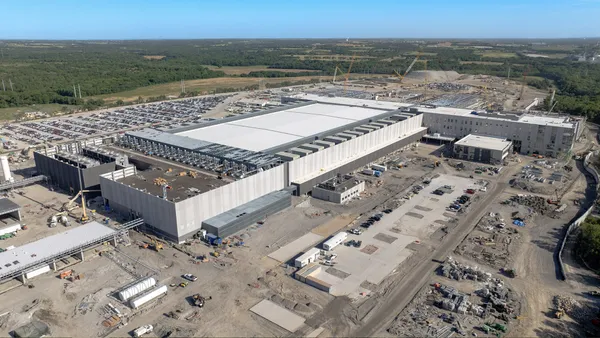Dive Brief:
- Life sciences construction deliveries will reach a record in 2024, but sluggish capital markets, high interest rates and slowing economic growth will halt the momentum in 2025, according to a new report from CBRE, a Dallas-based commercial real estate services firm.
- With a booming 38 million square feet of new lab space currently under construction that will likely outpace demand, the life sciences sector faces a potential oversupply issue in 2025, especially in the sector’s top markets — Boston, the San Francisco Bay Area and San Diego.
- Those top three life sciences construction markets experienced a faster inflow of venture capital funding between 2019 and 2021, which led to this recent surge in new construction. CBRE expects life sciences completions in 2024 to exceed the record levels of 2023, according to the report.
Dive Insight:
Life sciences construction is beginning to grapple with a delicate balance between supply and demand in the lab space, as oversupply concerns begin to loom over the industry, according to CBRE.
Scientific discovery, fueled by significant private and public capital, has led to a substantial 48% increase in the lab, research and development space over the past five years. In 2024, CBRE anticipates more than 18 million square feet of lab space completions. That’s about a 40% jump from 2023 levels.
Some notable wins in the sector include:
- A joint venture between McCarthy Building Cos. and Mortenson on a $1.06 billion National Bio and Agro-Defense Facility in Manhattan, Kansas, the nation’s leading animal disease research lab.
- DPR Construction’s contract on a 12-story Eleven50 Eastlake life sciences project, a 450,000-square-foot facility in Seattle which includes a mission-critical lab.
- A $106 million contract for Skanska to build an integrative sciences building in Raleigh, North Carolina.
But the faster inflow of venture capital funding in key markets has potentially triggered overambitious construction plans, contributing to the current construction boom, according to the report.
That means a potential correction could hit the life sciences construction pipeline in 2025. CBRE economists expect the construction pipeline to “drop dramatically in 2025,” largely due to economic challenges such as slow capital markets and high interest rates. CBRE did note any potential interest rate cuts in 2024 may spark additional transactions that have been delayed in recent years due to those factors.
Nevertheless, the nine other primary markets tracked by CBRE should maintain a more balanced supply and demand equilibrium, according to the report, since those regions didn’t receive as much venture capital funding as the top three markets. These other markets include:
- Philadelphia.
- New Jersey.
- Washington, D.C.- Baltimore.
- Seattle.
- Chicago.
- Raleigh-Durham.
- New York.
- Denver-Boulder.
- Los Angeles.












